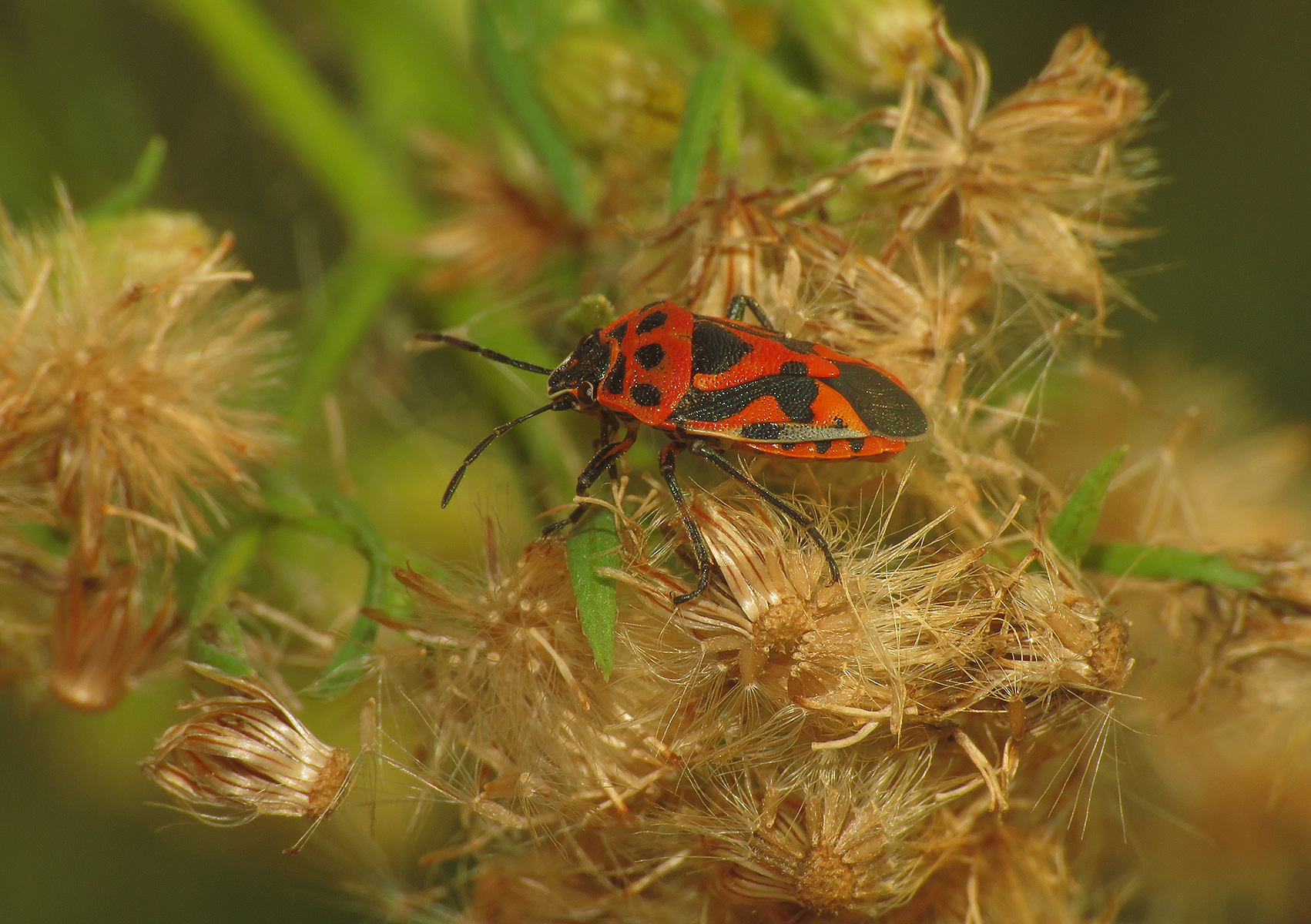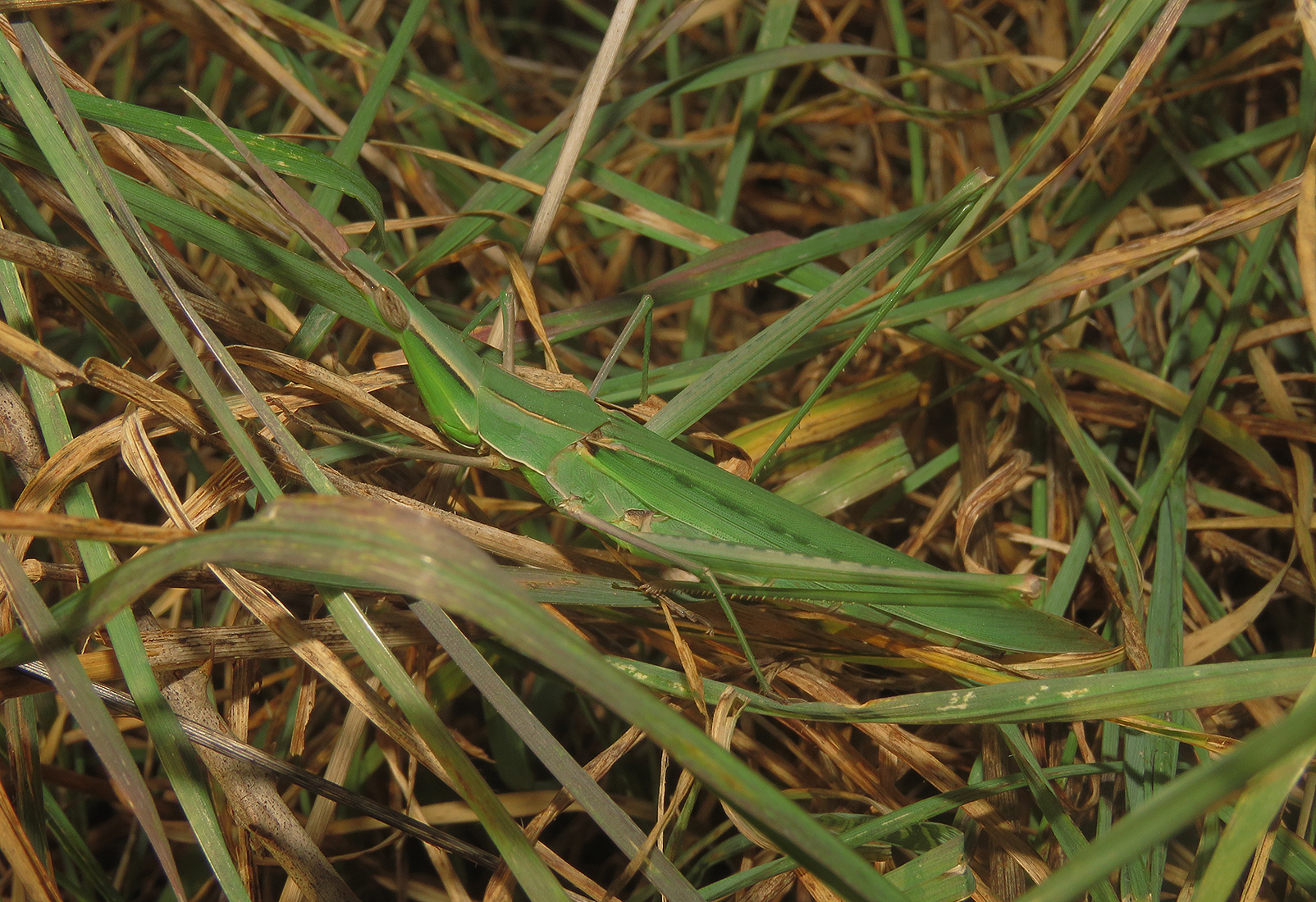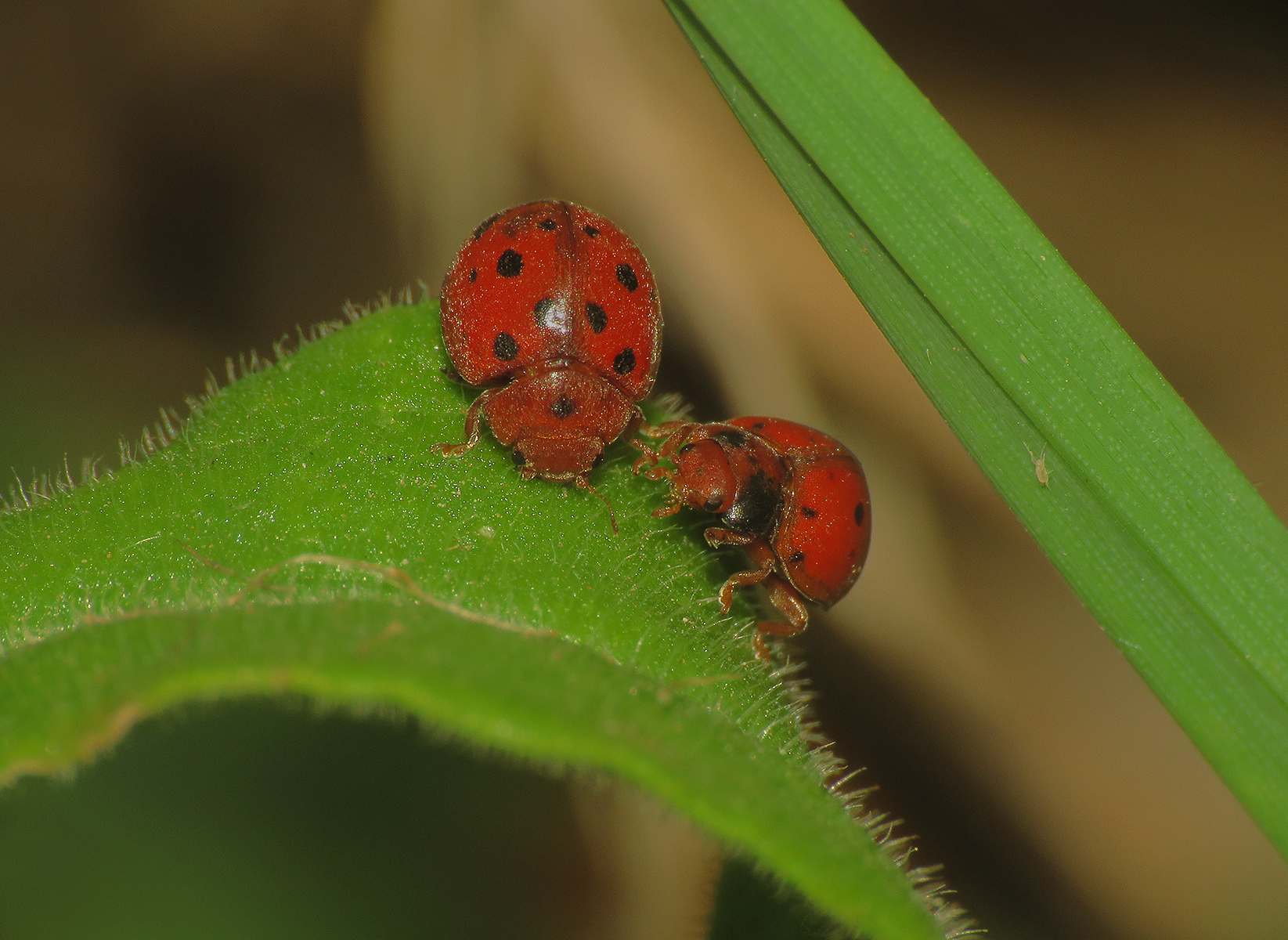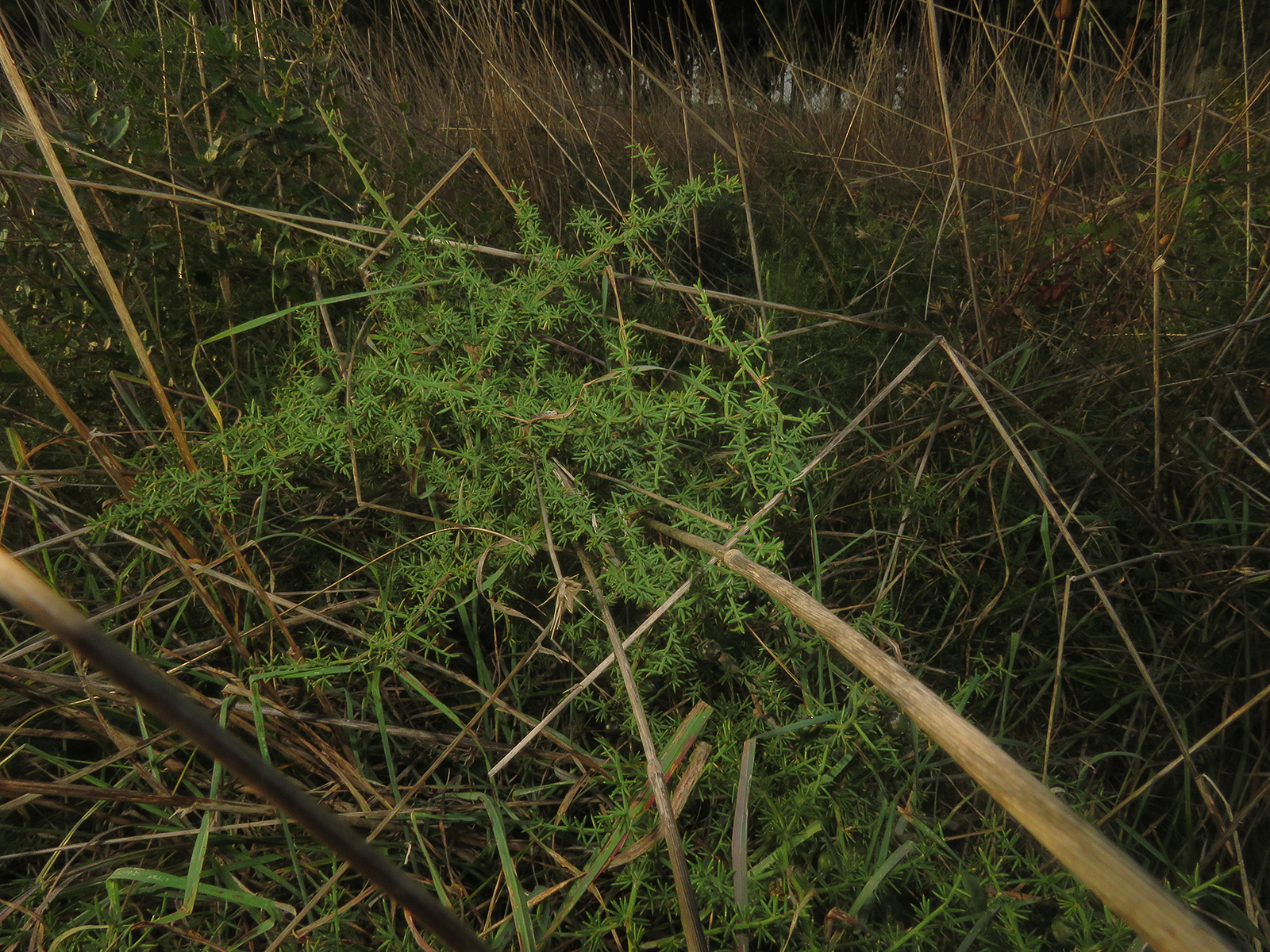To paraphrase the opening sentence from the fifth episode of this series, this year there wasn't much difference between the 20th day of October and all the other October days that preceded it. The weather was nice. Unusually warm, even hot around noon. With a bit of haze in the morning air.
I visited Marlera late in the afternoon and stayed until the blood-red sun sunk behind the shrubs and trees along the western horizon.
In today's post, you'll see some plants and insects I photographed there. As you can see in this opening tryptich, some of the insects were red as the setting sun.
Before continuing with the macro stuff, I would like to write a sentence that explains what this place called Marlera actually is. This is an obligatory moment that appears in every episode, somewhere in the text.
Marlera is a coastal area situated a couple of kilometers from the village of Liznjan and about five or six kilometers from where I live.
In the following photograph ...

... you can see the Eurydema ornata, a bug from the Pentatomidae family.

This beautiful insect was photographed among the fluffy seeds on the top of the Dittrichia viscosa plant.
If judging by its start, you come to a conclusion that red will be a very prominent color in today's episode, well - you'll be absolutely right about that.
I prepared more vivid red stuff, but ...

... but right now it's time to break the red line with an interesting green detail. A grasshopper, well-couflaged in the mix of fresh and dry grass. Through a macro lens, the insect is clearly recognizable, but when watched from a certain distance ...
... the grasshopper easily disappears in its environment.
The name of the species is Acrida ungarica.

This is the Papilio machaon caterpillar. Papilio machaon is a swallowtail butterfly that appeared in more than one of the previous episodes, but always in its larval form. The following photograph involves a dead caterpillar of the same kind ...

... and a living caterpillar of a moth. The moth in question is Helicoverpa armigera, another species that appeared more than once in this series - always as a caterpillar.

I came across these caterpillars many times but never in this combination.

This is the same scene shown from a different angle.

Here you can see two lovely ladybeetles...

... that were eating the fungal mold on the upper surface of the Silene latifolia leaf.
Subcoccinella vigintiquattuorpunctata is the name of this herbivore/fungivore species from the Coccinellidae family.

Here you can see a small moth I wasn't able to identify. The family is Crambidae, that's all I'm sure about in this case.

Grasshoppers in the meadows of Marlera are usually well-camouflaged and hard to notice until they jump away.
This Calliptamus italicus isn't an exception.
This is the Asparagus acutifolius, the plant that produces delicious edible shoots I often pick in spring. On the 20th of October, I haven't found any shoots, of course ...
... but I did come across a beautiful beetle that often feeds on the Asparagus acutifolius plant.

The scientific name of this species from the Chrysomelidae family is Crioceris duodecimpunctata. Just like me, the adults are very fond of the tender, aromatic shoots, but unlike me, they can also eat the needle-like things that look like the leaves of the plant. Those thorny "leaves" are modified stems that function more or less like leaves.
The larvae feed only on the fruits of the plant. I can't show you the larvae today becouse I haven't found any on the 20th of October but you can see a few berries in the foreground of this wide shot.

This portrait of Crioceris duodecimpunctata, commonly known as the spotted asparagus beetle, was taken in ambient light ...

... a couple of minutes before the sunset.
AND THAT'S IT. AS ALWAYS HERE ON HIVE, THE PHOTOGRAPHS ARE MY WORK - THE END.
The following links will take you to the sites with more information about some of the protagonists of this post. I found some stuff about them there.
https://en.wikipedia.org/wiki/Eurydema_ornata
https://en.wikipedia.org/wiki/Acrida_ungarica
https://en.wikipedia.org/wiki/Silene_latifolia
https://en.wikipedia.org/wiki/Subcoccinella_vigintiquatuorpunctata
https://en.wikipedia.org/wiki/Calliptamus_italicus
https://en.wikipedia.org/wiki/Asparagus_acutifolius
https://en.wikipedia.org/wiki/Crioceris_duodecimpunctata








